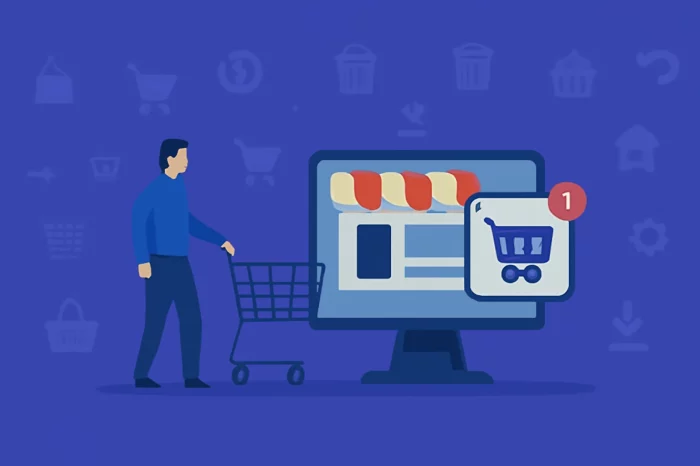Did you know that the average cart abandonment rate across all industries sits at a staggering 70.19%?
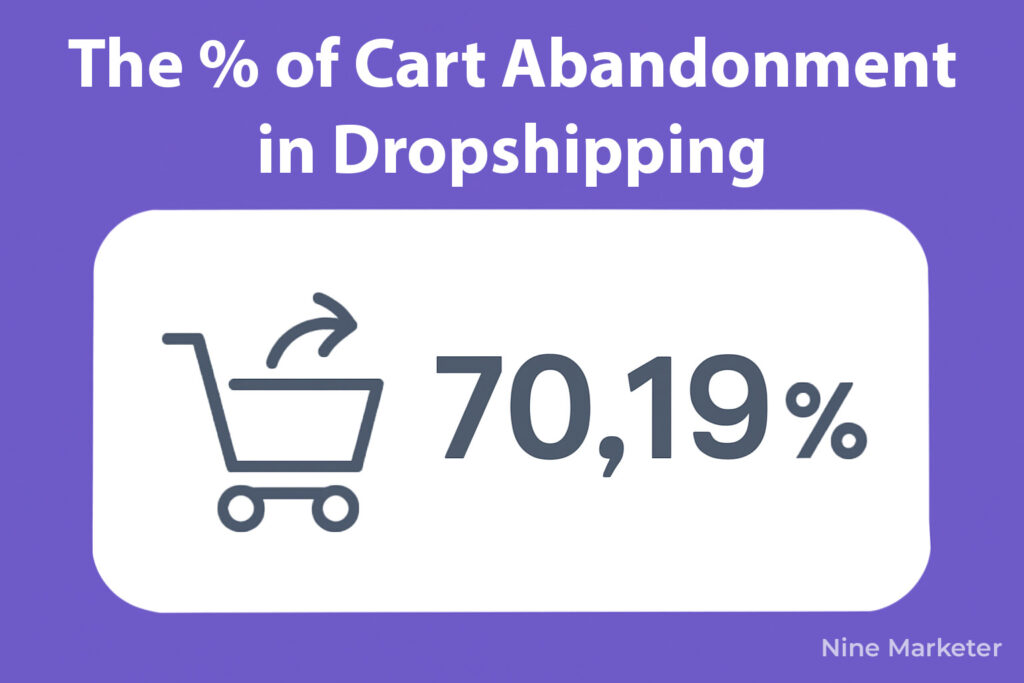
That means for every 10 potential customers who add items to their cart,
7 of them leave without completing their purchase!
As a dropshipping entrepreneur, you’re likely watching potential profits slip through your fingers every single day.
But here’s the good news
I’ve been there, and I’m about to show you exactly how to turn those abandoned carts into cold, hard cash.
Understanding Cart Abandonment in Dropshipping
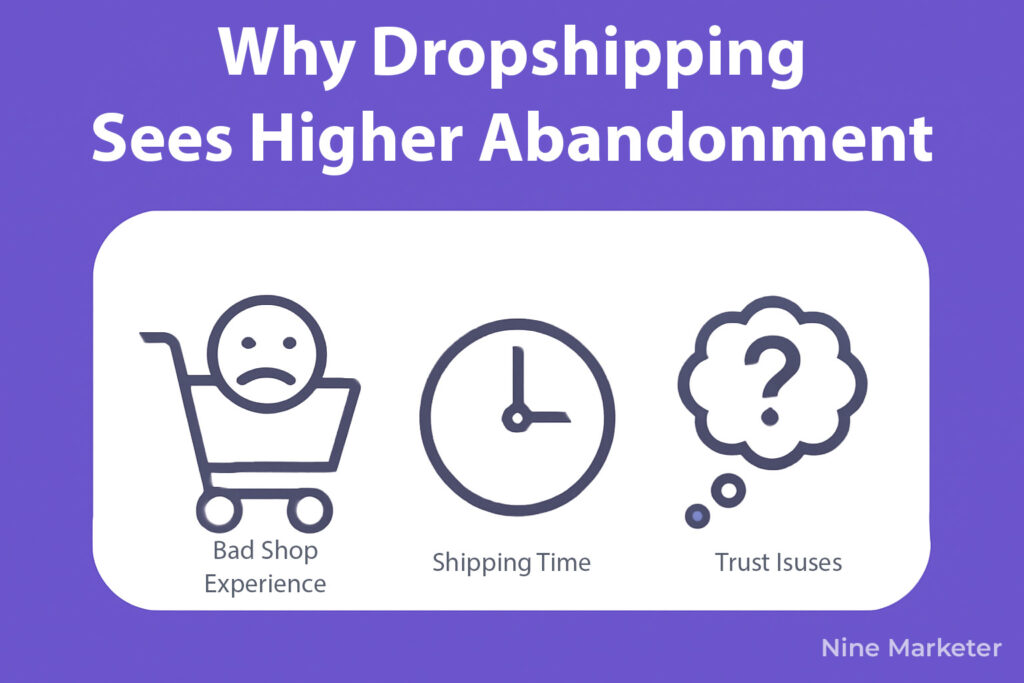
For context, most traditional e-commerce stores see abandonment rates around 65-70%, but dropshipping?
We’re looking at rates that can easily hit 80% or higher.
The harsh reality is that dropshipping stores face unique challenges that make customers way more likely to bail at checkout.
I’ve learned the lessons the hard way, and trust me, it hurt my wallet before I figured it out.
Why Dropshipping Gets Hit Harder
The biggest culprit? Trust issues.
When you started a store selling phone accessories
I didn’t realize how sketchy my site looked to potential customers.
Think about it from their perspective they’ve never heard of your brand.
Your “about us” page is basically empty, and you’re asking for their credit card info.

Traditional retailers have physical locations, established brands, and customer service teams.
We’re basically asking people to trust a stranger on the internet.
Shipping times are another killer.
Checkout page that mention “7-14 business days” for delivery, can make the customer thing into to buy the products from store that provide faster shipping.
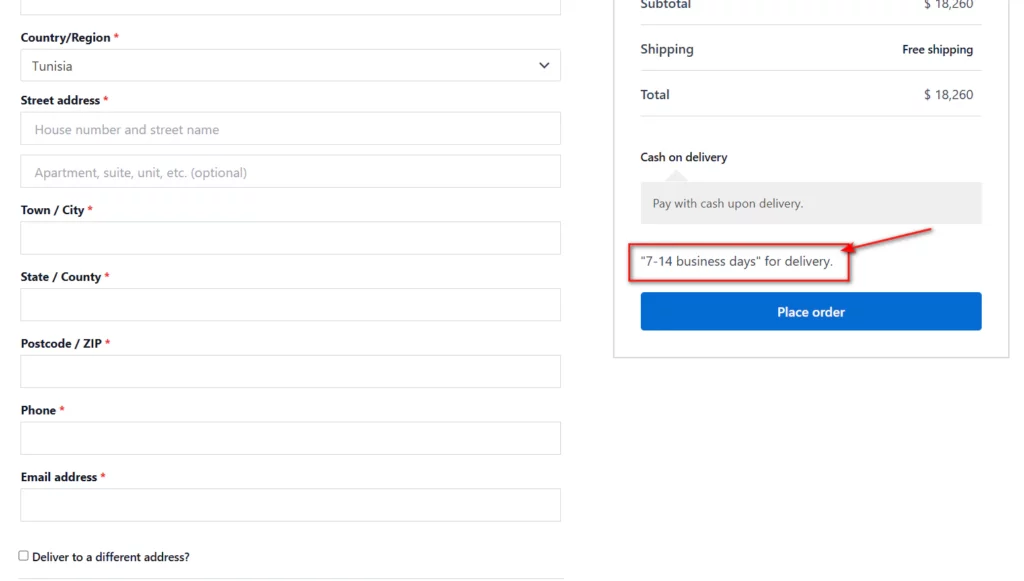
The customer probably went straight to Amazon where they could get something similar in two days.
Long shipping times don’t just increase abandonment, they make people question if you’re even a real business.
The Psychology Behind the Bounce
Here’s what I’ve noticed after analyzing hundreds of abandoned carts:
Customers get cold feet right at the moment of truth.
They’re ready to buy, they’ve got their card out, then suddenly their brain starts asking questions.
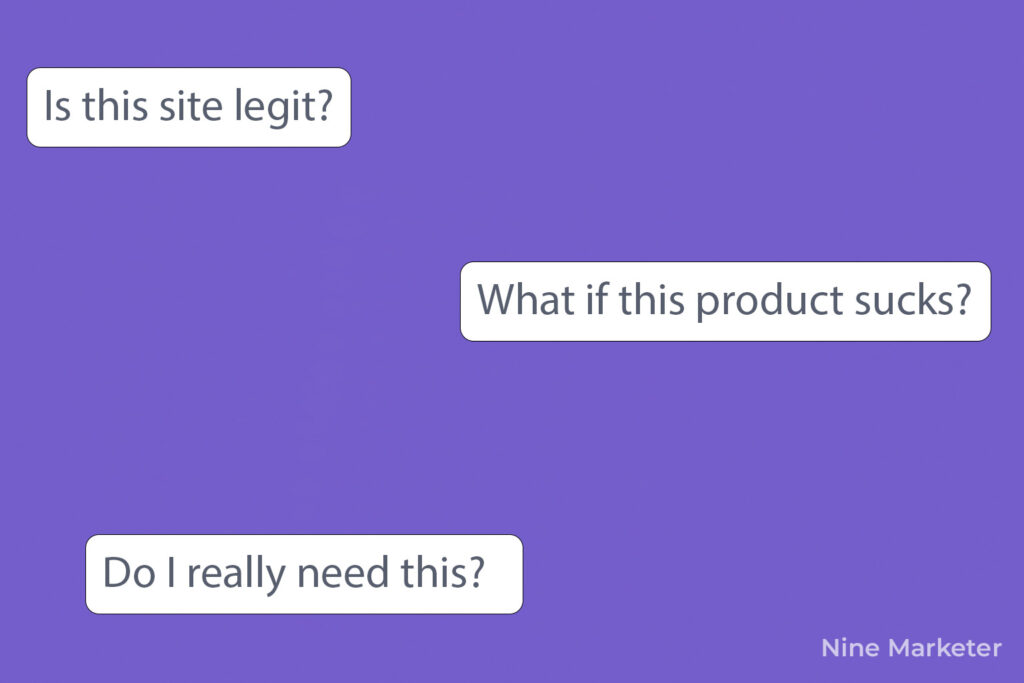
The psychology gets even trickier with impulse purchases, which make up a huge chunk of dropshipping sales.
Someone sees your Facebook ad for a cool gadget at 11 PM
Clicks through, adds to cart… then realizes they’re about to spend $50 on something
They’ve never heard of from a store they don’t recognize.
The rational brain kicks in and boom, abandoned cart.
Most of my lost sales happened within the first 5 minutes, right when people were filling out their shipping info.
That’s decision paralysis hitting hard.
In brevity image how to use Psychology to recover people back to complete checkout:
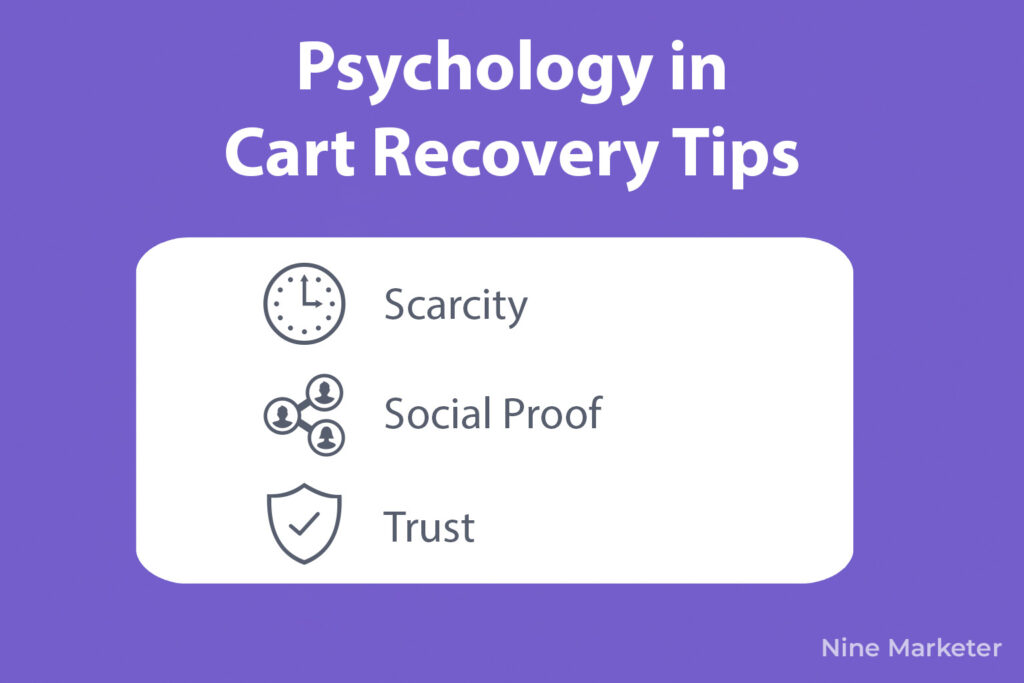
Dropshipping-Specific Deal Breakers
Beyond the obvious trust and shipping issues.
There are some dropshipping-specific factors that’ll kill your conversions faster than you can say “AliExpress.”
Hidden fees are brutal.
I made this mistake early on, advertising a product for $29.99 then hitting customers with $12 shipping at checkout.
Nothing screams “amateur hour” like surprise charges.
Your abandonment rate will skyrocket because people feel deceived.
Product quality uncertainty is another big one.
Unlike established brands, customers can’t walk into a store and touch your products.
They’re buying based on your product photos and descriptions
Which honestly, are probably pulled from your supplier’s listing.
I’ve seen abandonment rates drop significantly just by adding better product videos and more detailed descriptions.
The return policy situation is messy too.
When customers realize they might have to ship a defective item back to China at their own expense, they nope right out of there.
I started offering hassle-free returns (eat the cost on defective items) and saw my conversion rate improve.
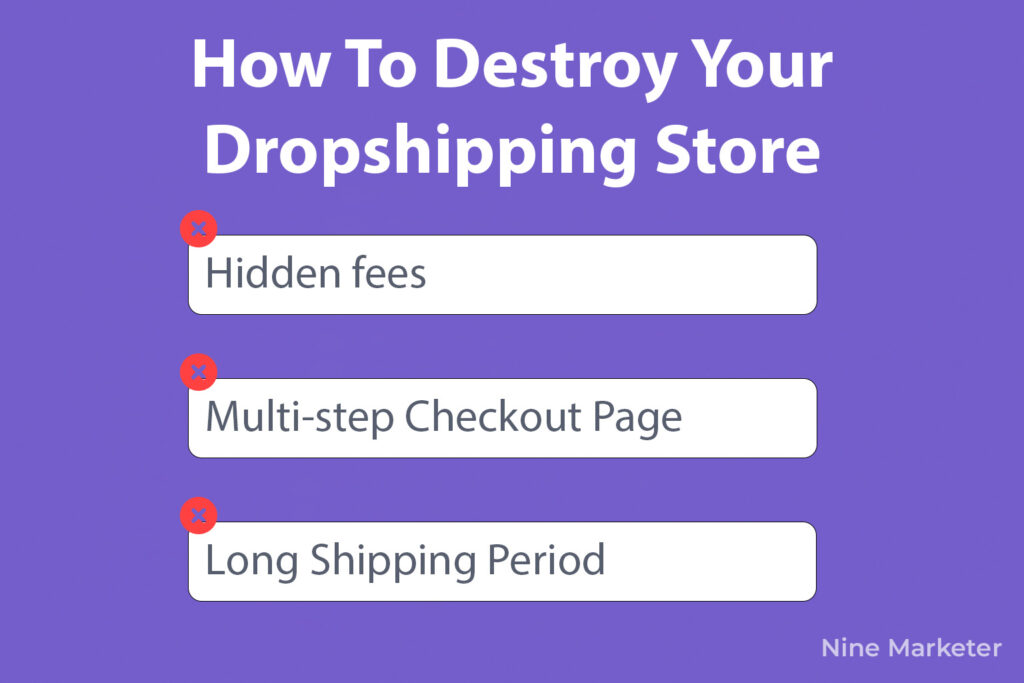
Making Recovery Part of Your Conversion Strategy
Here’s where most dropshippers mess up.
They treat cart abandonment recovery as an afterthought instead of building it into their conversion optimization from day one.
I learned this lesson after trying to bolt on recovery emails to an already broken checkout process.
Your recovery strategy needs to start before the abandonment happens.
That means optimizing your checkout flow, being transparent about shipping times.
And building trust signals throughout the customer journey.
Exit-intent popups offering small discounts work, but they’re band-aids if your fundamental trust and shipping issues aren’t addressed.
Email sequences are crucial, but timing matters more than most people realize.
I send my first recovery email within 1 hours.
While the product is still fresh in their mind.
The second email goes out after 24 hours with social proof.
And the third after 72 hours with a small discount.
This sequence recovers about 25% of my abandoned carts.
The key is treating each abandoned cart as valuable feedback about your checkout process, not just a lost sale to recover.
1. Essential Tools and Platforms for Cart Recovery Setup
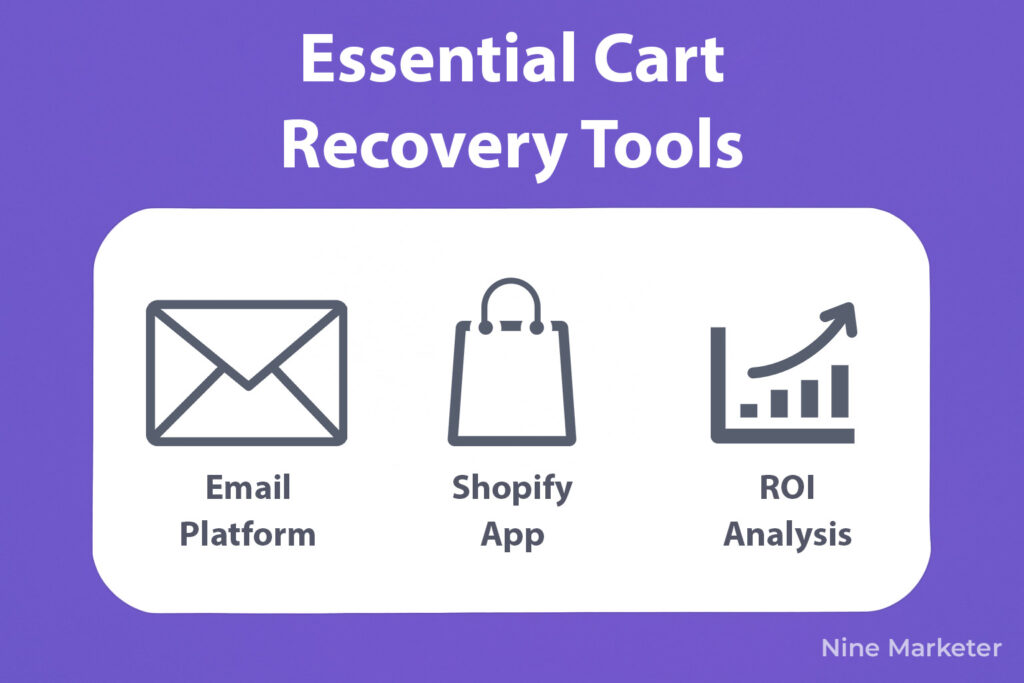
I’ll be honest, when I first started setting up cart recovery for my dropshipping store.
I went down a rabbit hole that cost me three weeks and way too much money on tools I didn’t need.
The sheer number of options out there is overwhelming.
And most comparison articles don’t tell you what actually works for dropshipping specifically.
After testing pretty much every major platform over the past two years.
I’ve got some strong opinions about what’s worth your time and money.
More importantly, I’ve learned which tools actually move the needle on recovery rates versus the ones that just look fancy in demos.
Email Marketing Platforms
Let’s start with Klaviyo, because honestly, it’s become the gold standard for dropshipping cart recovery.
I switched to Klaviyo about 18 months ago after getting frustrated with Mailchimp’s limitations, and the difference was night and day.
Klaviyo’s integration with Shopify is seamless, and I mean actually seamless.
Not the “mostly works but you’ll spend hours troubleshooting” kind of integration I’ve dealt with before.
The platform automatically tracks cart abandonment events, customer behavior, and purchase history without any manual setup.
Their segmentation capabilities are insane, I can target customers based on specific products they abandoned.
How much they spent on previous orders, and even their browsing behavior.
The downside?
It’s expensive.
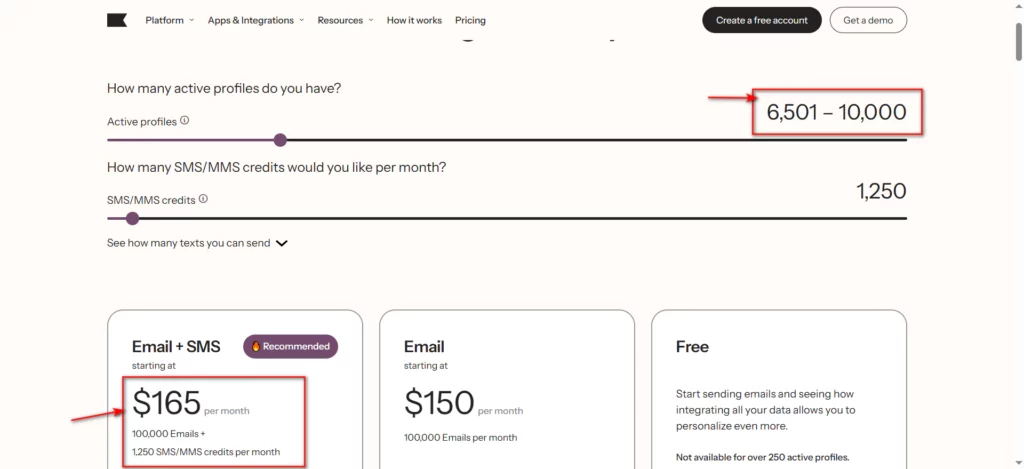
The price around $165/month for about 6,501 – 10,000 contacts, which is significantly more than other platforms.
But here’s the thing, my cart recovery rate with Klaviyo sits is much better, compared to the I was getting with Mailchimp.
The ROI justifies the cost, especially when you factor in their advanced automation features.
Mailchimp is where most people start, and I get why.
It’s user-friendly, relatively cheap, and has decent automation features.
For my first store, I was paying maybe $30/month for similar contact numbers.
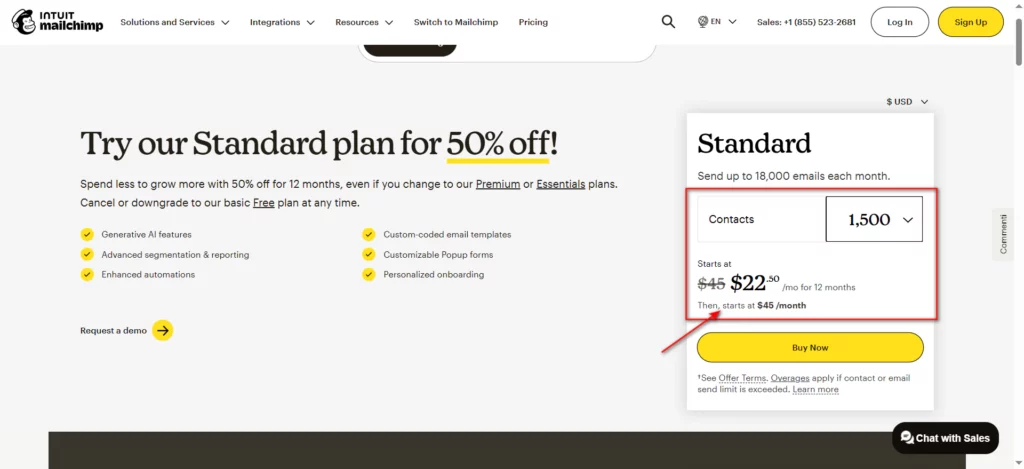
The cart recovery emails worked fine, but the segmentation options were limited, and I couldn’t get as granular with my targeting.
The biggest issue I had with Mailchimp was their e-commerce integration felt like an afterthought.
Setting up product recommendations in abandoned cart emails was clunky.
And their analytics didn’t give me the detailed insights I needed to optimize my sequences.
If you’re just starting out and budget is tight, it’ll do the job, but you’ll probably outgrow it quickly.
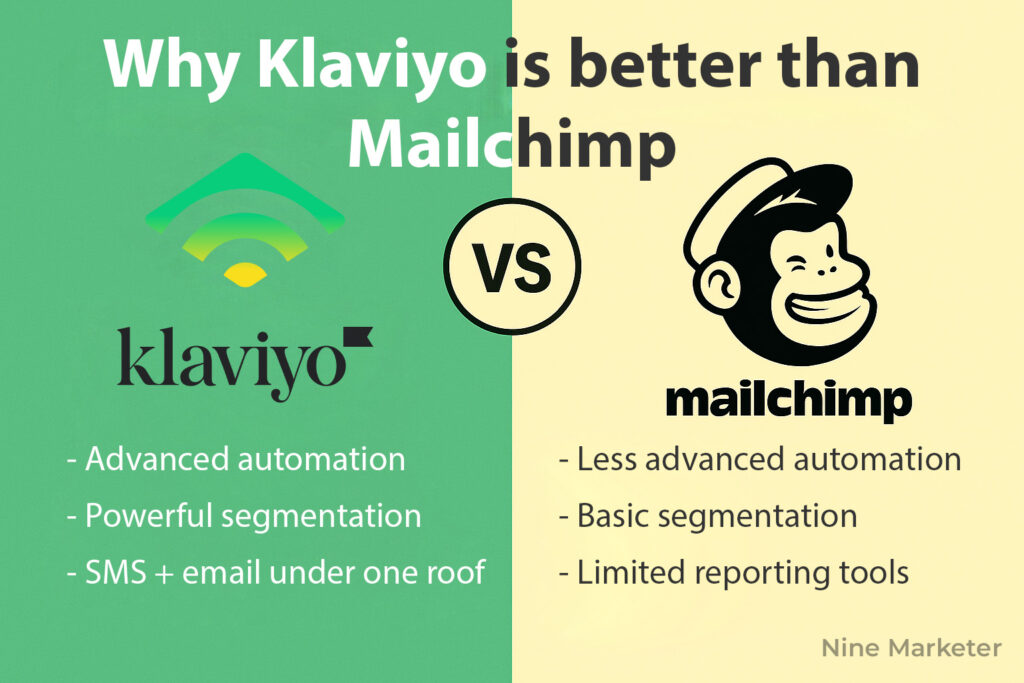
Shopify Apps vs. Third-Party Solutions
This is where I made some expensive mistakes early on.
I initially went the Shopify App Store route because it seemed simpler,
Just install an app and you’re done, right? Wrong.
Most Shopify cart recovery apps are basically glorified email schedulers.
They’ll send basic abandonment emails.
But they lack the sophisticated segmentation and personalization features you get with dedicated email platforms.
I tried apps like Cartly Abandoned Cart Recovery and Recart, and while they work.
The recovery rates were disappointing, usually hovering around 12-15%.
The real problem with Shopify apps is data limitations.
You’re stuck with whatever analytics and segmentation the app provides, and most of them are pretty basic.
Plus, you’re building your email list within the app’s ecosystem.
Which makes it harder to migrate if you want to switch tools later.
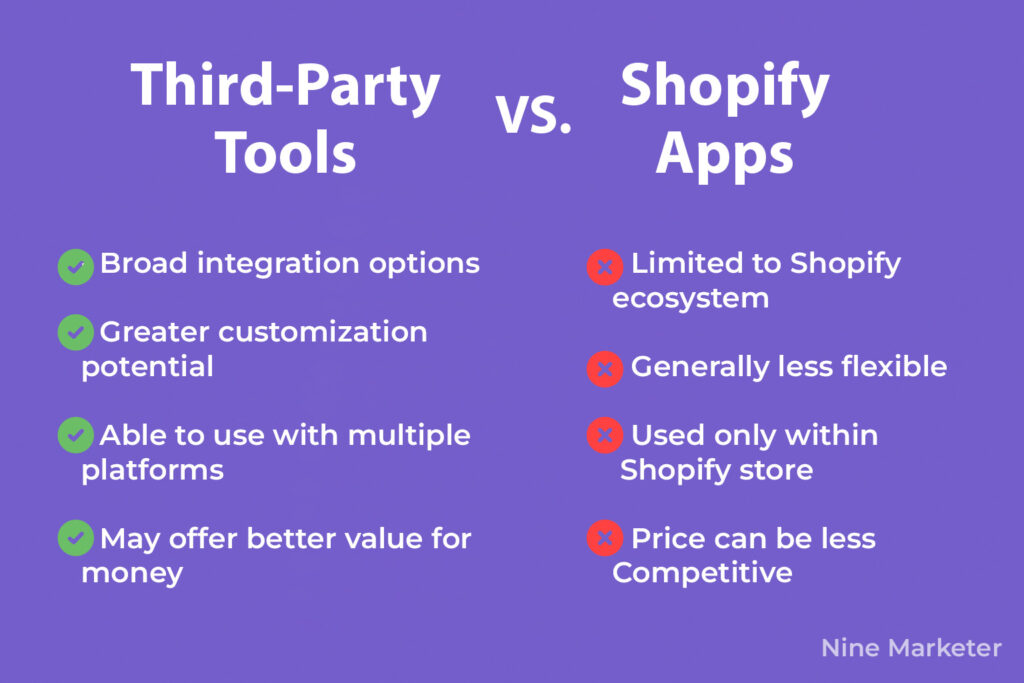
Third-party solutions like Klaviyo or Mailchimp give you way more control and better long-term flexibility.
Yes, the setup is more complex.
But you own your data and have access to much more sophisticated automation capabilities.
The integration process usually involves adding tracking codes to your site and connecting your Shopify store through API.
Which sounds scary but is actually pretty straightforward.
Integration Requirements and Setup Headaches
Speaking of integration, let me save you some headaches I went through.
Most email platforms will walk you through connecting your Shopify store?
But there are some gotchas that aren’t always obvious.
First, make sure your email platform can access all the customer data you need.
This includes not just email addresses and purchase history, but also browsing behavior, cart contents, and customer lifetime value.
Klaviyo excels here because it automatically syncs all this data, while some other platforms require additional setup steps.
Tracking code implementation is crucial but often overlooked.
Your email platform needs to be able to track when customers visit your site.
What they view, and when they abandon their carts.
Most platforms provide JavaScript tracking codes that you add to your theme.
But if you’re not comfortable with code, you might need help from a developer.
API connections between your email platform and Shopify should be bidirectional.
This means customer data flows both ways, your email platform gets customer behavior data.
And Shopify gets information about email engagement.
This is important for creating unified customer profiles and more accurate analytics.
Cost Considerations and ROI Reality Check
Let’s talk money, because this is where most dropshippers either overspend.
On features they don’t need or underspend and hurt their recovery rates.
For a store doing $10,000-$30,000 monthly revenue.
Expect to spend $50-$200/month on email marketing, depending on your list size and platform choice.
That might seem like a lot, but here’s the math that convinced me it’s worth it:
With 500 daily visitors and a 3% add-to-cart rate, you’re getting 15 cart additions per day.
At a 75% abandonment rate, that’s 11 abandoned carts daily.
If your email sequence recovers 25% of those (which is achievable with good tools)
You’re recovering about 3 sales per day.
With an average order value of $50, that’s $150 in daily recovered revenue, or $4,500 monthly.
Even if you’re spending $200/month on email marketing, you’re still seeing a 22:1 ROI just from cart recovery.
Not counting the other benefits like customer retention and list building.
The key is matching your tool choice to your current revenue level.
Don’t start with the most expensive option if you’re doing $2,000/month in sales.
But don’t cheap out with a $10/month solution if you’re doing $50,000/month either.
2. Setting Up Your Email Automation Sequence
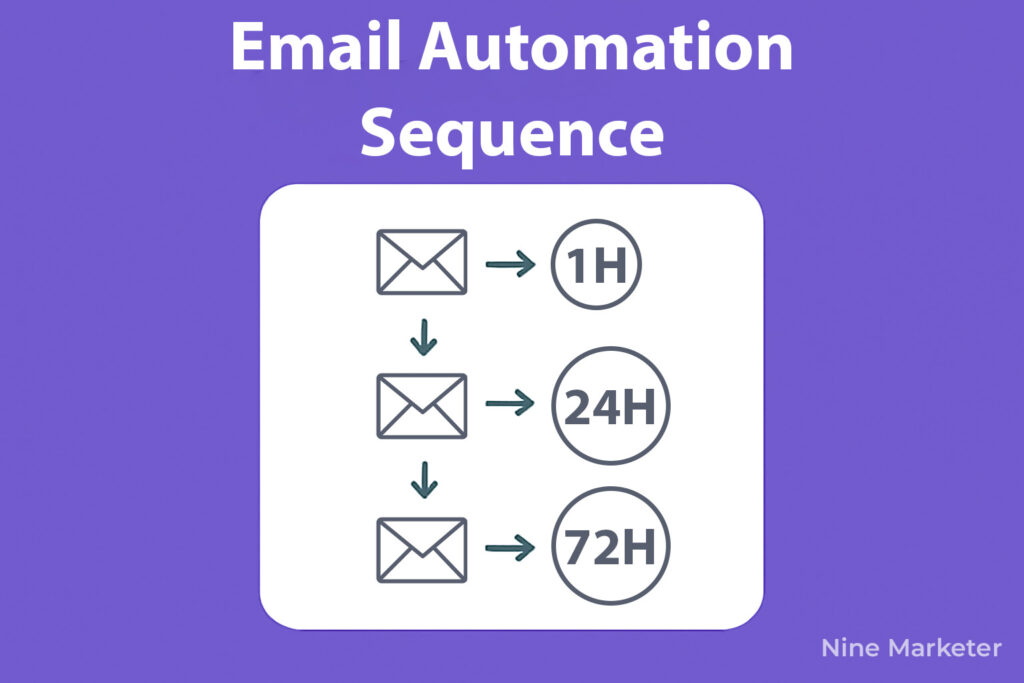
The first time I set up an abandoned cart email sequence.
I thought I was being clever by sending one email with the subject line “You forgot something!” Yeah, that didn’t work.
My recovery rate was a pathetic, and I couldn’t figure out why people weren’t coming back to complete their purchases.
It took me about six months of testing different approaches to realize that cart recovery isn’t about sending one perfect email.
It’s about creating a conversation that addresses different concerns at different stages of the customer’s decision-making process.
Now my three-email sequence consistently recovers 32% of abandoned carts.
And I’m going to walk you through exactly how I built it.
Crafting That First Email Template
Your first email is crucial because it sets the tone for the entire sequence.
I learned this the hard way after sending generic “complete your purchase”.
Emails that felt more like automated spam than helpful reminders.
The subject line makes or breaks your open rates.
After testing probably 50 different variations, here’s what actually works:
“Sarah, your (product name) is waiting”
Performs way better than generic lines like “Complete your order” or “Don’t miss out.” Personal + specific = higher open rates.
I’m seeing open rates around 45% with personalized subject lines versus 28% with generic ones.
My current first email template includes the customer’s name, a clear image of the abandoned product, and the exact cart total.
But here’s the key, I don’t just show them what they left behind.
I remind them why they wanted it in the first place.
If someone abandoned a phone case, I mention the protection benefits and include a customer review about durability.
The call-to-action button is huge, literally.
I made mine bright orange, used action words like “Secure My Order” instead of “Buy Now,”.
And made sure it’s finger-friendly for mobile users.
Small changes, but my click-through rate jumped from 12% to 18% just by optimizing the CTA.
Timing Your Email Sequence
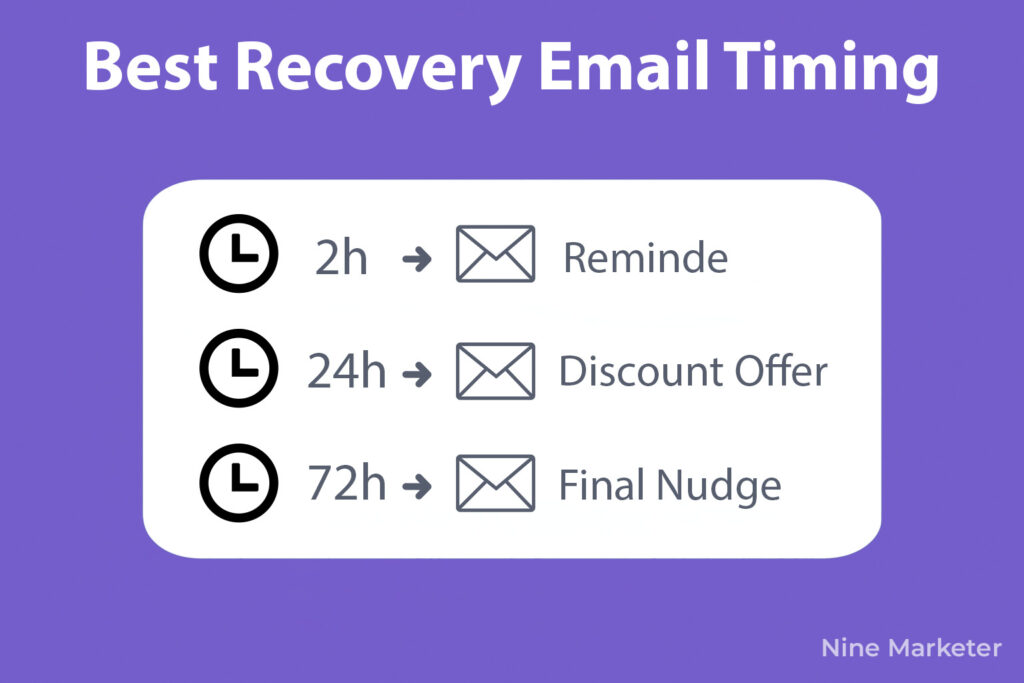
This is where most people screw up.
They either send emails too quickly (annoying customers).
Or wait too long (customers forget about the product entirely).
After testing different intervals for over a year, here’s my winning formula:
First email goes out 1 hours after abandonment.
This might seem fast, but think about it the customer just had your product in their hands (virtually) and decided not to buy.
They’re still thinking about it, and a gentle reminder while it’s fresh in their mind works incredibly well.
This email recovers about 40% of all the sales I’m going to recover from the sequence.
Second email hits 24 hours later.
By now, the customer has had time to think.
Maybe comparison shop, or deal with whatever interrupted their original purchase.
This email needs to be different.
I include social proof like customer reviews and address common concerns about shipping times.
This one recovers another 35% of my total recovered sales.
The third email comes 72 hours after the second one.
This is where I get a bit more aggressive with urgency (without being pushy).
And sometimes offer a small discount.
I’ve found that 5-10% off is enough to push fence-sitters over the edge without training customers to always wait for discounts.
This final email grabs the remaining 25% of recoverable sales.
I tested sending a fourth email after a week.
But the recovery rate was less than 2%, and I started getting unsubscribes.
Three emails seems to be the sweet spot for most dropshipping products.
Personalization That Actually Works
Generic emails don’t cut it anymore.
Customers can smell automation from a mile away.
And if your emails feel like mass broadcasts, they’ll hit delete faster than you can say “conversion rate.”
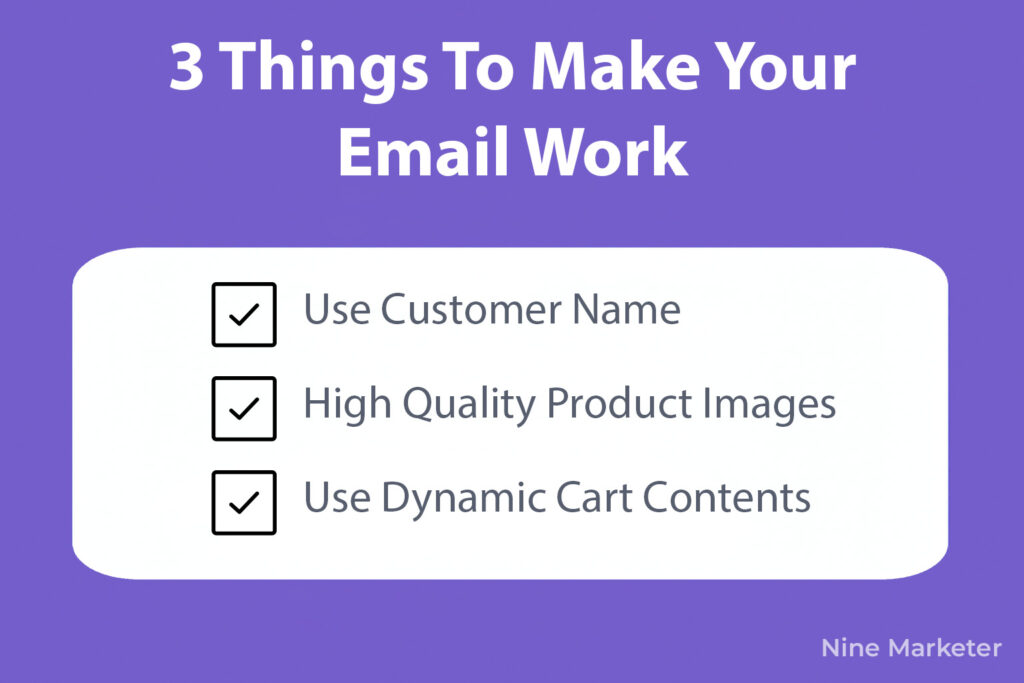
Using the customer’s name is obvious, but make sure you have a fallback for when that data isn’t available.
Nothing looks more amateur than “Hi !” in an email. I use “Hi there” as my default when names are missing.
Product images are non-negotiable.
But here’s what most people get wrong they use tiny thumbnail images that look terrible on mobile.
I use high-quality product images that are at least 300 pixels wide.
And I make sure they link directly back to the product page, not just the cart.
Dynamic cart contents are where the magic happens.
Instead of just showing what they abandoned, I include related products they viewed or items frequently bought together.
This works especially well for impulse-buy products where customers might be interested in multiple items.
But the most effective personalization I’ve discovered is referencing their browsing behavior.
If someone spent 5 minutes reading product reviews before abandoning.
I mention that in the email: “We noticed you were checking out the reviews – here’s what other customers are saying…”
It shows you’re paying attention and makes the email feel less robotic.
Writing Copy That Addresses Dropshipping Concerns
This is where understanding your customers’ psychology becomes crucial.
Dropshipping customers have specific concerns that traditional e-commerce customers don’t have.
And your email copy needs to address these head-on.
Shipping anxiety is huge.
Instead of hiding your shipping times.
I mention them upfront and frame them positively:
“Your order will be carefully prepared and shipped within 2-3 business days. with tracking provided every step of the way.”
The key is being transparent while emphasizing the care and attention that goes into fulfillment.
Trust concerns need to be tackled immediately.
I include my return policy in every email, mention any security badges or certifications.
And always include real customer reviews.
One line that works well:
“Join over 10,000+ happy customers who love their (product name)” with a real review snippet below.
Value reinforcement is critical because dropshipping products often compete on price.
I remind customers why they chose my product over cheaper alternatives: better quality, unique features, or superior customer service.
If someone abandoned a $30 phone accessory.
I might mention how it compares to the $15 knockoffs they could find elsewhere.
The biggest mistake I see in dropshipping cart recovery emails is being too salesy.
Your customers already wanted to buy something just got in the way.
Your job is to remove obstacles, not convince them they need the product.
2. Crafting High-Converting Recovery Email Content
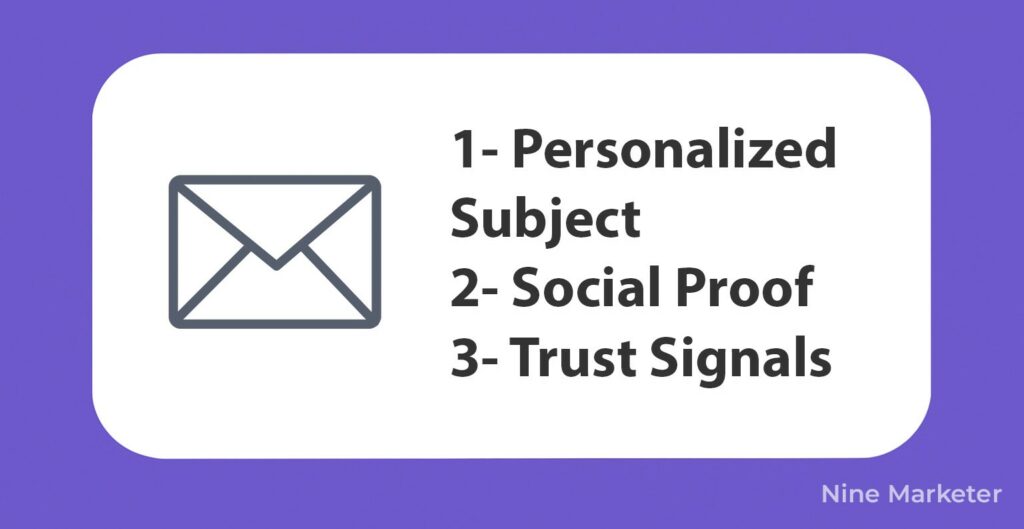
I used to think writing cart recovery emails was simple just remind people what they left behind and ask them to buy it.
Boy, was I wrong. My first attempts were getting maybe 12% open rates and even worse click-through rates.
I was basically throwing money away with every abandoned cart.
It wasn’t until I started treating these emails like mini-sales pages instead of automated reminders that everything changed.
Now I’m consistently hitting 40-50% open rates and 22% click-through rates on my recovery sequences.
The difference?
Understanding that each email needs to solve a specific problem that prevented the initial purchase.
Subject Line Formulas That Actually Work
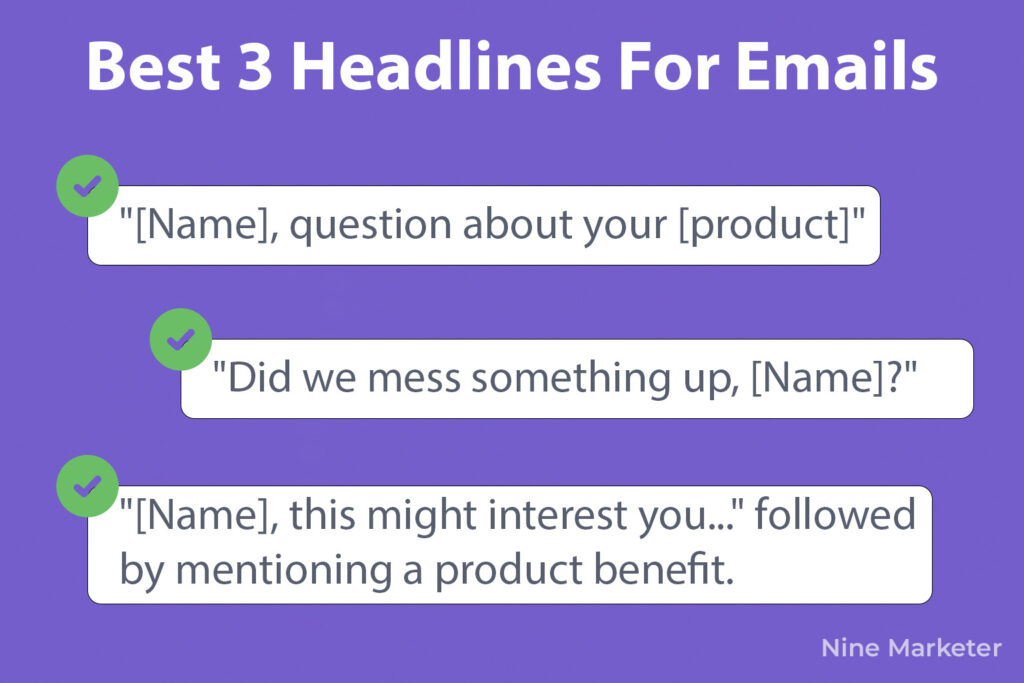
After testing hundreds of subject lines.
I’ve discovered that most “best practices” are complete garbage for dropshipping stores.
The generic urgency tactics like “Last chance!” might work for established brands.
But they make dropshipping emails look like spam.
My highest-performing formula is:
“[Name], question about your “
It gets opened because it feels personal and implies there might be an issue they need to know about.
“Sarah, question about your phone case order”
consistently pulls better open rates versus something generic like “Complete your purchase”.
The curiosity approach works incredibly well too.
“Did we mess something up, [Name]?”
Performs better than straightforward reminders because people want to know what went wrong.
It’s not manipulative if you genuinely use the email to address potential concerns.
I’ve found that mentioning specific product names in subject lines boosts opens by about 15%.
“Your wireless charger is reserved” beats “Your items are waiting” every single time.
Specificity makes it feel less like a mass email and more like a personal reminder.
One formula that surprised me with its effectiveness:
“[Name], this might interest you…” followed by mentioning a product benefit.
It works because it doesn’t feel like a sales pitch.
But curiosity gets people to open.
Just make sure your email content delivers on whatever you hint at in the subject line.
Copywriting That Builds Trust Without Being Pushy
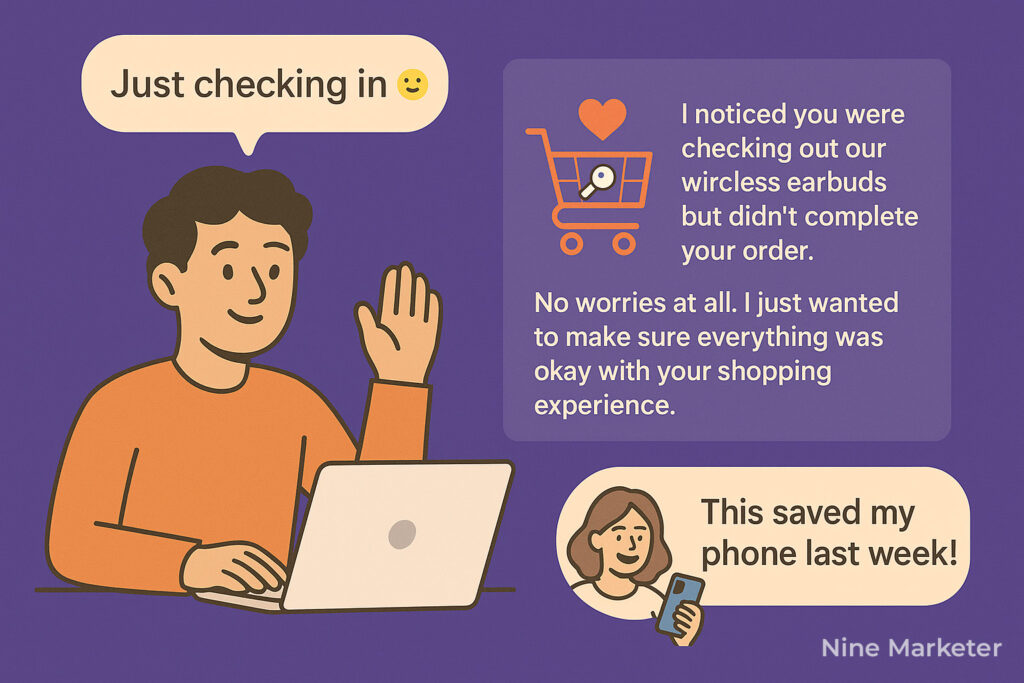
This is where most dropshippers completely blow it.
They either write like used car salesmen or they’re so worried about being pushy that their emails have zero persuasive power.
The sweet spot is being helpful while addressing the real reasons people abandon carts.
I start every email by acknowledging that they chose not to complete their order.
And that’s totally fine.
Something like: “I noticed you were checking out our wireless earbuds but didn’t complete your order. No worries at all. I just wanted to make sure everything was okay with your shopping experience.”
This approach works because it removes pressure while opening the door to address concerns.
Then I can naturally transition into solving whatever problem might have caused the abandonment.
Maybe they were worried about shipping times, or the product seemed too good to be true, or they just got distracted.
The key is writing like you’re talking to a friend who’s on the fence about a purchase.
You want to be helpful, not salesy.
I use phrases like:
“just wanted to check in” and “thought you might want to know” instead of “BUY NOW” type language.
Storytelling works incredibly well in recovery emails.
Instead of just listing product features, I tell mini-stories about how other customers use the product.
For a phone case, I might mention:
“Jennifer from Texas told us this case saved her phone when she dropped it in a parking lot last week.”
It’s social proof disguised as a helpful story.
Social Proof That Actually Converts
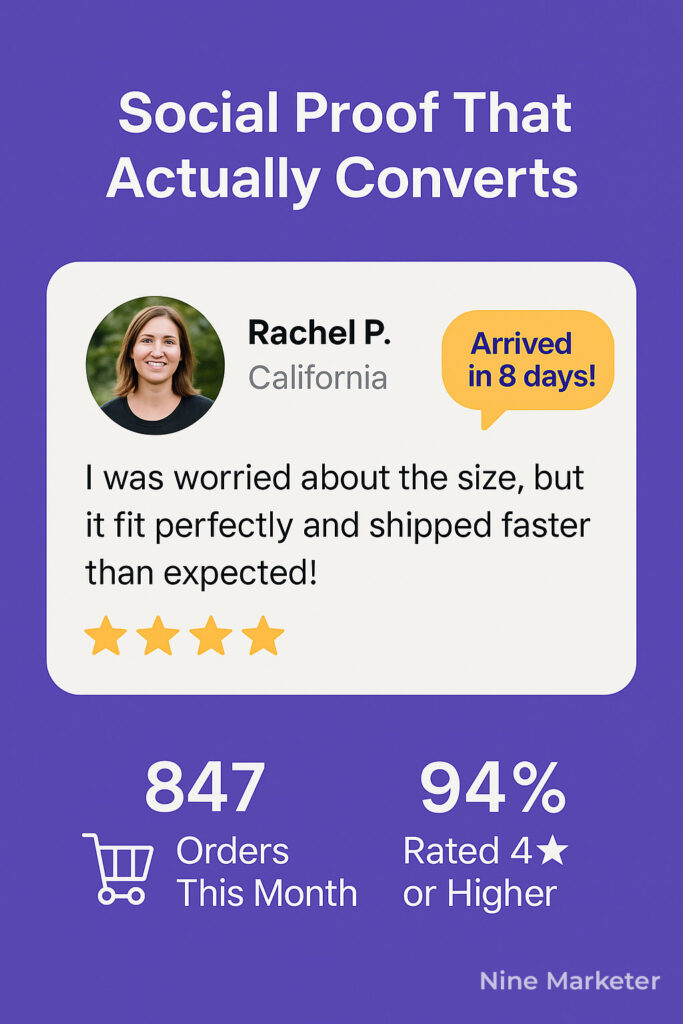
Generic testimonials don’t move the needle anymore.
Customers can spot fake reviews from a mile away.
And even real reviews feel manufactured if they’re not presented correctly.
I’ve learned that specificity and relevance are everything when it comes to social proof in recovery emails.
Instead of “Great product! 5 stars!”
I include reviews that address common concerns:
“I was worried about the shipping time from overseas, but it arrived in 8 days and the quality exceeded my expectations. The tracking updates kept me informed the whole time.”
This works because it directly addresses dropshipping anxiety.
Photo reviews are absolute gold for cart recovery emails.
When someone abandoned a fitness product.
I include a customer photo showing the actual product in use.
Not just a generic stock photo.
Real customers using real products in real situations.
That’s what moves people from consideration to purchase.
I also use what I call
“concern-based social proof.”
If someone abandoned because they were worried about sizing.
I include reviews that specifically mention fit.
If shipping time was the concern, I showcase reviews that mention fast delivery.
Match the social proof to the likely objection.
Numbers work incredibly well too.
Instead of saying
“customers love this product,”
I say
“847 customers have bought this in the past month, with 94% rating it 4 stars or higher.”
Specific numbers feel more credible than vague claims.
Addressing Dropshipping Objections Head-On
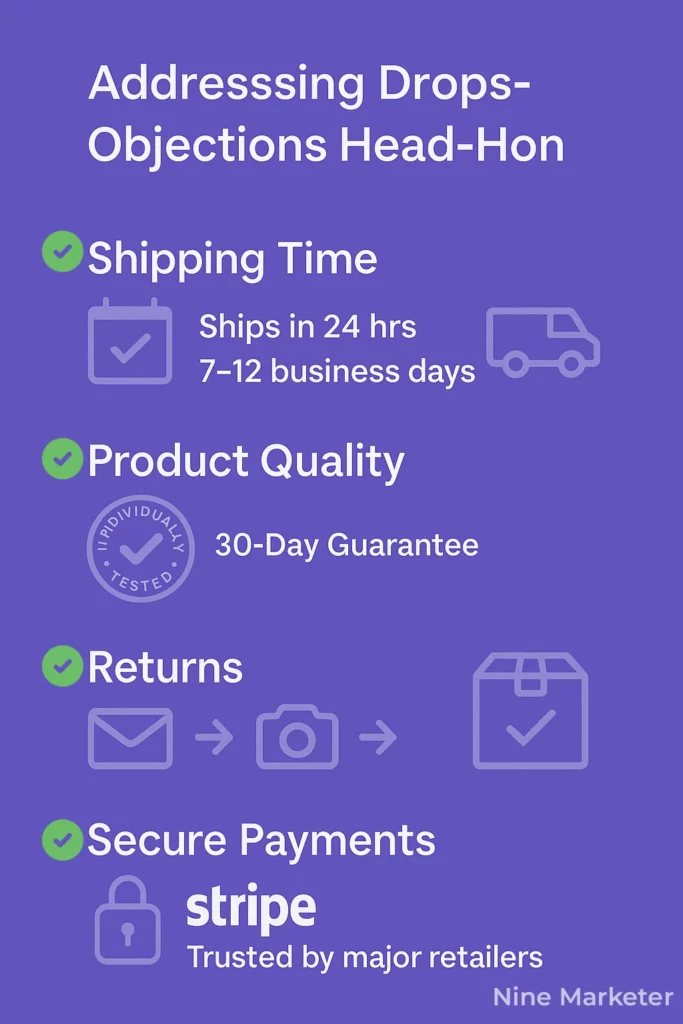
The biggest mistake I see in cart recovery emails is avoiding the elephant in the room.
Your customers know you’re dropshipping, and pretending you’re not just makes you look sketchy.
Address their concerns directly and honestly.
Shipping times are the number one objection.
Instead of hiding behind vague “processing time” language.
I’m specific:
“Your order will be processed within 24 hours and shipped via express carrier, typically arriving in 7-12 business days. We’ll send you tracking information as soon as it ships so you can follow its progress.”
Product quality concerns need to be tackled with detailed explanations and guarantees.
I include information about materials, manufacturing standards, and quality control processes.
Something like: “Each unit is individually tested before shipping, and we stand behind every product with our 30-day money-back guarantee.”
Return concerns are huge for dropshipping customers.
I address this by being transparent about the return process while emphasizing our customer service:
“If you’re not completely satisfied, just email us and we’ll make it right. Most issues are resolved with a quick photo, but if you need to return the item, we’ll provide a prepaid label.”
The trust factor is critical.
I mention things like secure payment processing, customer service availability, and any certifications or partnerships.
“Your payment is processed through Stripe’s secure servers, the same system used by major retailers worldwide.”
Call-to-Action Buttons That Actually Work
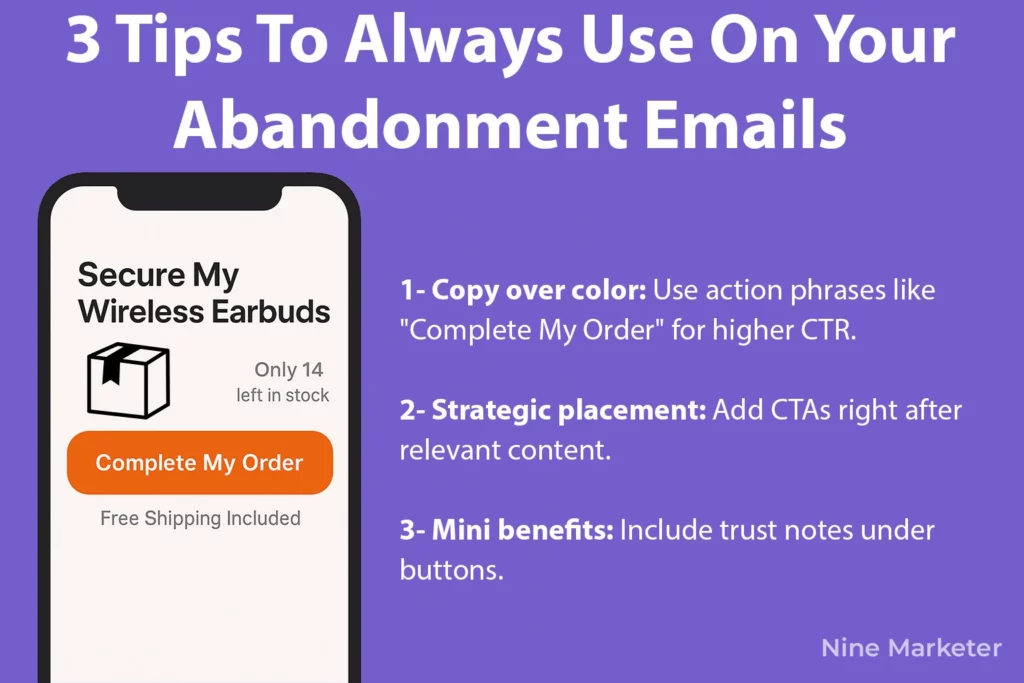
I used to think CTA buttons were just about color and size.
Then I started testing different approaches and realized the button text makes a massive difference in click-through rates.
“Complete My Order”
Consistently outperforms “Buy Now” or “Add to Cart” because it acknowledges that they’ve already started the purchase process.
It feels like continuing something rather than starting over.
“Secure My [Product Name]” works incredibly well for popular items or when inventory is genuinely limited.
It implies that the product might not be available later and positions the action as securing something valuable rather than just buying.
Size and placement matter more than you’d think.
I use buttons that are at least 44 pixels tall (optimal for mobile tapping).
And I place them strategically throughout the email.
Not just at the end.
If someone’s convinced after reading about shipping, they shouldn’t have to scroll down to find the button.
Color testing revealed some interesting insights.
Bright orange outperformed red, blue, and green in my tests.
But the most important factor was contrast with the email background.
The button needs to stand out without looking garish or unprofessional.
I also include multiple CTAs in longer emails.
But I make them contextually relevant.
After addressing shipping concerns, I might have a button that says
“Get Shipping Details.” After social proof, “See More Reviews.”
This gives people multiple opportunities to click without being repetitive.
One technique that boosted my click-through rates by 18% was adding small bits of text under the main CTA button.
Things like
“Free shipping included” or “30-day guarantee”
Give people one final reason to click. It’s like adding a mini-benefit statement right at the moment of decision.
The mobile experience is crucial since most of my emails are opened on phones.
I test every button on multiple devices to make sure
They’re easy to tap and the landing page loads quickly.
A great email is worthless if the checkout process is broken on mobile.
3. Advanced Recovery Strategies Beyond Email
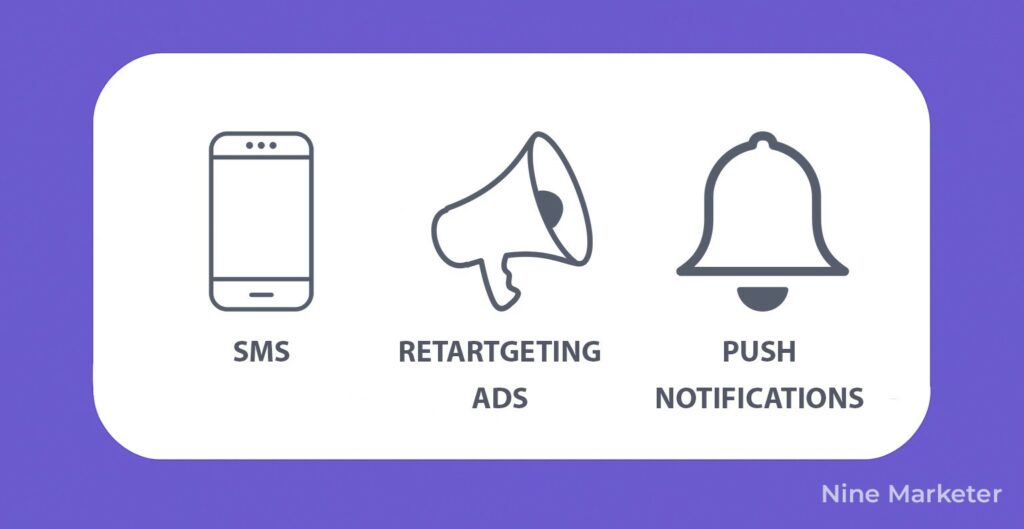
Email recovery was working great for me – I was hitting around 28% recovery rates with my three-email sequence.
But then I started noticing something that bugged me:
I was only reaching customers who actually opened my emails.
What about the 55% who never even saw my carefully crafted recovery messages?
That’s when I realized I was leaving money on the table by relying on just one recovery channel.
Over the past year,
I’ve built out a multi-channel recovery system that combines SMS,
retargeting ads, exit-intent popups, and even push notifications. My overall recovery rate jumped from 28% to 47%, and I’m about to show you exactly how I did it.
SMS Recovery: The Game Changer
I was honestly skeptical about SMS recovery at first.
It felt too invasive, like I’d be annoying customers with text messages about their abandoned carts.
Boy, was I wrong. SMS recovery became my highest-performing channel within two months of implementing it.
The key is timing and tone.
I send my first SMS 4 hours after cart abandonment, well before my first email.
The message is super casual: “Hey Sarah! You left something in your cart. Need help finishing your order? Just reply STOP to opt out.” That’s it.
No pushy sales language, no urgency tactics – just a friendly reminder.
My SMS open rate is 98% (because people always read their texts) and my click-through rate is 31%.
Compare that to email’s 45% open rate and 18% click-through rate, and you can see why SMS became my secret weapon.
I’m using a service called SMSBump that integrates with Shopify, and it costs about $50/month for my volume.
The opt-in process was tricky to figure out.
I can’t just text random people – that’s illegal and will get you banned from SMS services fast.
I collect phone numbers at checkout by offering order updates via SMS.
About 60% of customers opt in, which gives me a solid pool for SMS recovery.
One thing that caught me off guard was how different SMS copy needs to be.
What works in email feels way too formal in a text message. I keep my SMS messages under 160 characters and write like I’m texting a friend.
“Forgot to grab your phone case? 😊 Complete your order here: [link]” performs way better than formal copy.
Push Notifications for Mobile Apps
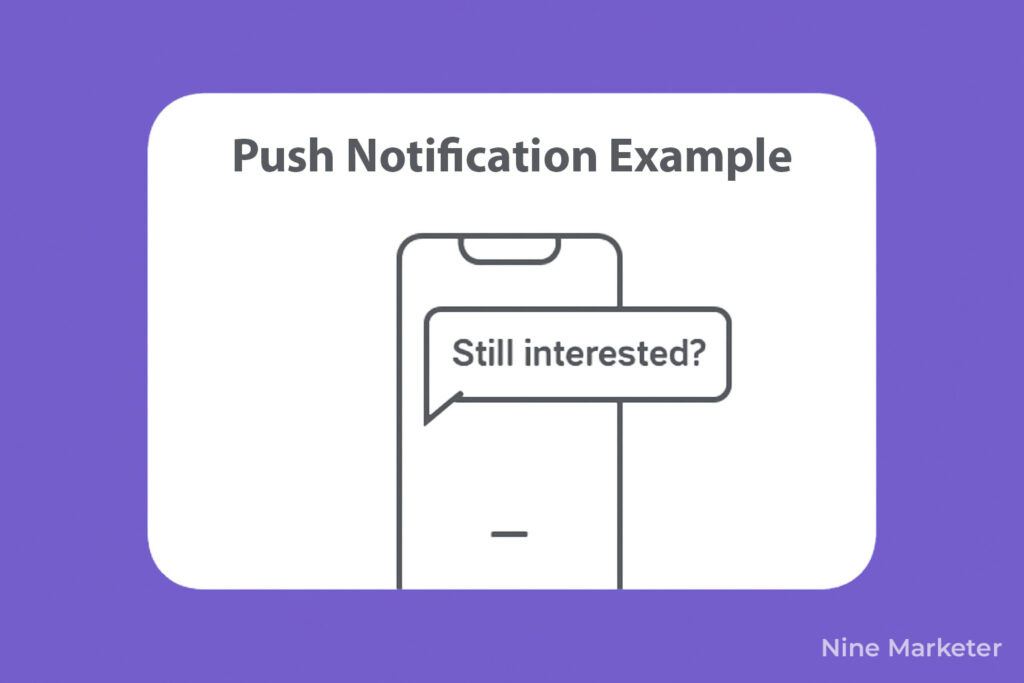
I’ll be honest – building a mobile app for my dropshipping store felt like overkill at first.
But after seeing the engagement rates from push notifications.
I’m convinced it’s worth the investment if you’re doing serious volume.
My app is pretty basic just a mobile-friendly version of my store built with Shopify’s mobile app builder.
The real value comes from the push notification capability for cart recovery.
Push notifications have a 90% open rate and 25% click-through rate, which absolutely destroys email performance.
The key to push notification success is relevance and timing.
I don’t blast everyone with the same message.
Someone who abandoned a $20 item gets a different message than someone who abandoned a $100 order.
Higher-value abandoners get more personalized attention.
I send push notifications 6 hours after cart abandonment, after SMS but before email.
The message is super simple: “Your cart is waiting! Complete your order in 30 seconds.”
I include the product name and a direct link to checkout, not just the homepage.
The biggest challenge was getting people to download the app in the first place.
I offer app-exclusive deals and faster checkout for app users.
About 25% of my repeat customers have downloaded the app, which gives me a decent audience for push notifications.
One thing that surprised me was how much better push notifications perform on weekends compared to weekdays.
My weekend click-through rates are 35% higher, probably because people have more time to browse and shop when they’re not at work.
Multi-Channel Orchestration
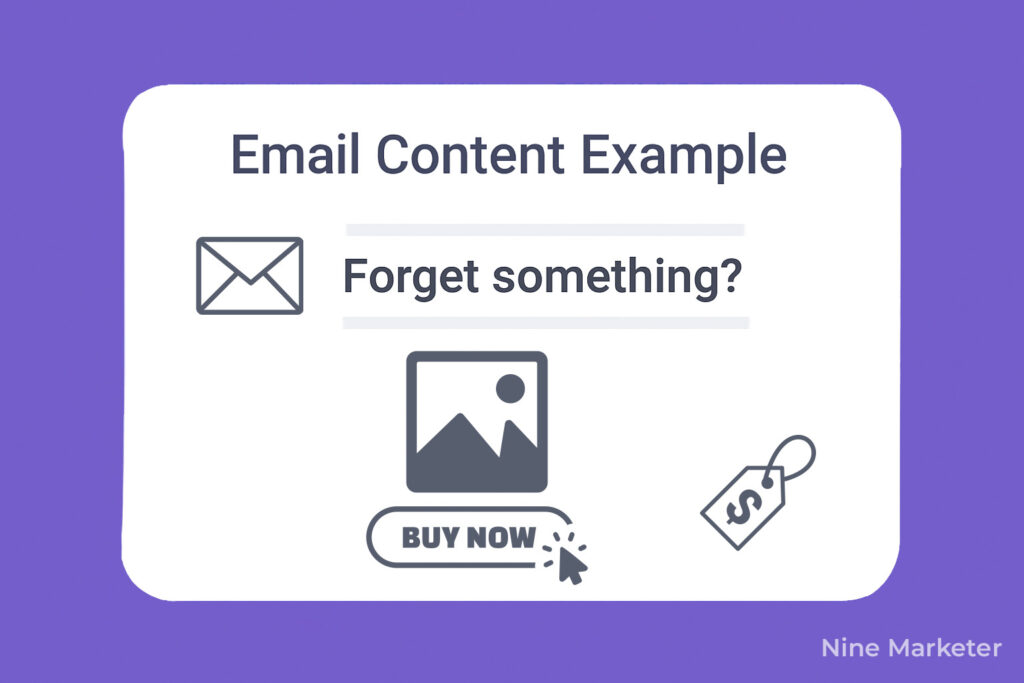
Here’s where it gets really interesting combining all these channels into a coordinated recovery strategy.
I don’t just blast customers across every channel simultaneously.
Instead, I’ve built a sequence that uses each channel’s strengths at optimal times.
My recovery timeline looks like this:
SMS at 4 hours (immediate, high-impact)
Email at 8 hours (detailed, informative)
Retargeting ads starting day 2 (persistent, trust-building)
And push notifications for app users at key moments.
Each channel has a specific role in the recovery process.
I use customer data to determine which channels to prioritize for each individual.
High-value customers get the full treatment across all channels.
Customers who have previously responded well to email get email-heavy sequences.
First-time visitors get more trust-building through retargeting ads.
The trick is making sure the messaging is consistent across channels while optimizing for each channel’s format.
Someone shouldn’t get a formal email and a casual text about the same abandoned cart.
The tone needs to match the channel while reinforcing the same core message.
Timing coordination is crucial to avoid overwhelming customers.
I space out my touchpoints so people don’t feel bombarded.
If someone clicks on an SMS link, I pause the email sequence for 24 hours.
If they engage with a retargeting ad, I reduce the frequency of other channels.
Attribution tracking across channels was a nightmare to set up.
But it’s essential for understanding what’s actually working.
I use UTM parameters and tracking pixels to see which channel gets credit for recovered sales.
Often, it’s not the last touchpoint – someone might see a retargeting ad.
Then respond to an email, then complete the purchase via SMS link.
The results speak for themselves.
My multi-channel approach recovers 47% of abandoned carts compared to 28% with email alone.
The setup was complex and took about three months to perfect.
But the ROI has been incredible.
I’m now recovering an additional $8,000 monthly in sales that would have been lost with just email recovery.
Conclusion
Setting up abandoned cart recovery for your dropshipping store isn’t just about sending a few follow-up emails
It’s about creating a comprehensive system that turns lost opportunities
Into profitable relationships.

I’ve walked you through every step,
From choosing the right tools to crafting compelling recovery sequences that actually convert.
Remember,
The average dropshipping store loses thousands of dollars monthly to cart abandonment.
But with the strategies I’ve outlined above,
You can recover 20-30% of those abandoned carts and significantly boost your revenue!
Start with the basic email sequence,
Then gradually implement the advanced tactics as your store grows.
Ready to stop watching money walk out the door?
Pick one strategy from this guide and implement it this week.
Your future self (and your bank account)



